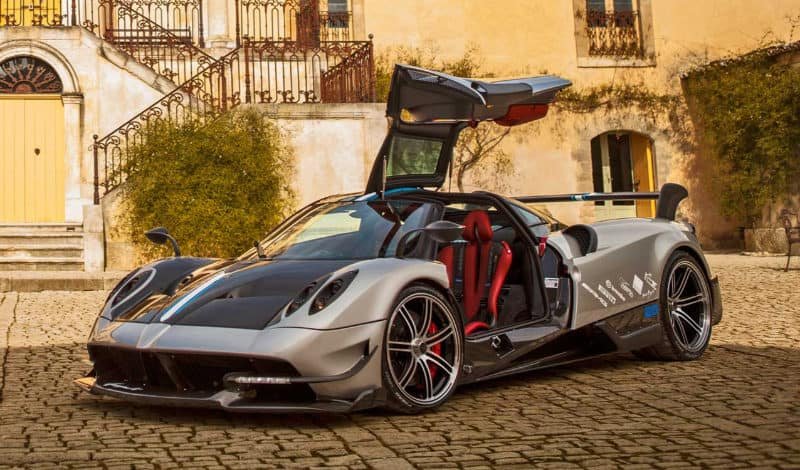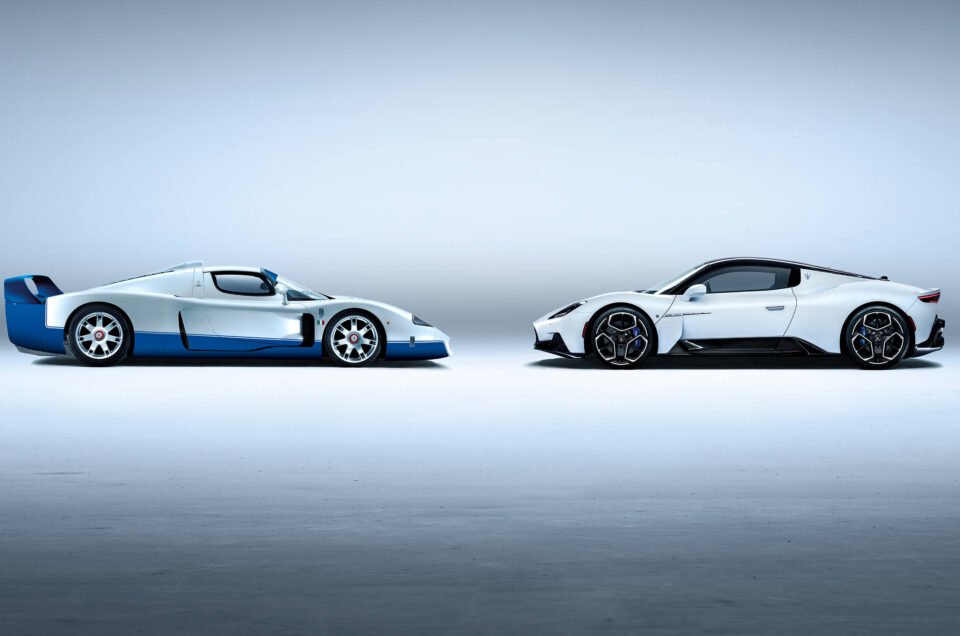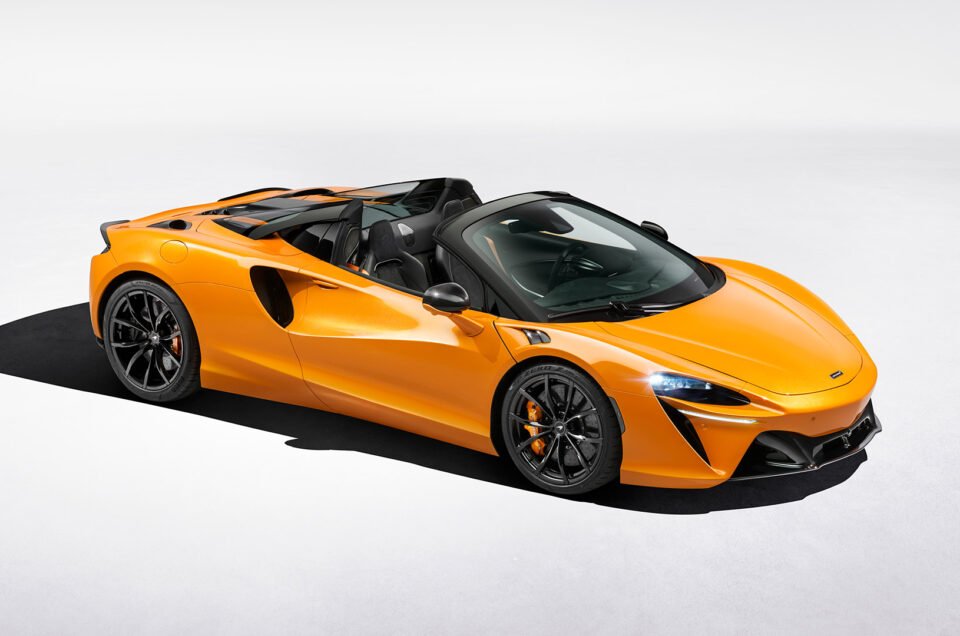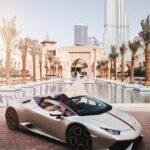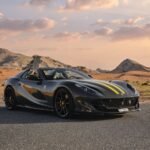Introduction to Porsche and McLaren
Porsche and McLaren are two of the most esteemed names in the automotive industry, known for their remarkable histories, innovative contributions, and unwavering commitment to luxury and performance. Porsche, founded by Ferdinand Porsche in 1931 in Stuttgart, Germany, initially focused on vehicle development work, including the seminal Volkswagen Beetle. The brand’s first production model, the Porsche 356, was introduced in 1948, setting the stage for its enduring legacy in performance and design. Over the decades, Porsche has remained synonymous with engineering excellence and has been behind many iconic models, such as the 911, renowned for their extraordinary handling and sophisticated aesthetics.
On the other hand, McLaren’s journey began in 1963 when New Zealand-born driver Bruce McLaren established Bruce McLaren Motor Racing. Initially, the company thrived in the realm of Formula One, achieving remarkable success on the racetrack. The foray into road cars came later, with the introduction of the McLaren F1 in 1992, a model hailed as one of the greatest supercars of all time. Since then, McLaren has consistently pushed the boundaries of automotive technology, producing vehicles that blend cutting-edge design with unparalleled performance capabilities.
Both Porsche and McLaren have carved out prestigious reputations, not only due to their innovative engineering and luxurious offerings but also because of their storied histories in motorsport. While Porsche has amassed victories in endurance racing and has been a dominant force in Le Mans, McLaren’s legacy in Formula One, including multiple World Championships, speaks volumes about its competitive prowess.
This blog post aims to provide a comprehensive comparison of Porsche and McLaren, examining various factors to determine which marque stands superior. Through an exploration of their performance metrics, design philosophies, technological innovations, and customer experiences, we aim to offer an insightful analysis that will help automotive enthusiasts and potential buyers make an informed decision. Stay with us as we delve into the intricacies of these two legendary brands.
Design and Aesthetics
When evaluating the design philosophies of Porsche and McLaren, it becomes evident that both brands have carved out unique niches. Porsche’s design ethos revolves around timeless elegance and understated luxury. Models like the Porsche 911 exemplify this approach, boasting smooth, continuous lines and an iconic silhouette that has remained relatively unchanged for decades. This consistency conveys a message of enduring style, emphasizing the brand’s commitment to perfection.
McLaren, in contrast, takes a more avant-garde approach to design. Models such as the McLaren 720S encapsulate a futuristic, aggressive aesthetic characterized by bold, angular lines and dramatic curves. This innovative styling is not only visually striking but also serves functional purposes, enhancing aerodynamics and performance. The brand’s use of cutting-edge materials like carbon fiber further underscores its dedication to high performance and lightweight construction.
The exterior styling of Porsche models often features a harmonious blend of tradition and subtle evolution. Signature elements like the oval headlights and wide rear haunches are instantly recognizable and contribute to the car’s iconic status. Interior design in Porsche vehicles prioritizes driver-centric layouts, with high-quality materials such as leather, aluminum, and wood being prominently used, creating an atmosphere of refined sophistication.
McLaren’s interiors, however, resemble a cockpit, emphasizing minimalism and advanced technology. The use of lightweight materials like Alcantara and carbon fiber highlights the brand’s focus on reducing weight without compromising luxury. The central infotainment system and customizable digital displays put advanced technology at the driver’s fingertips, aligning with McLaren’s futuristic outlook.
In balancing aesthetics with functionality, Porsche leans towards creating a luxurious, yet practical driving environment. Meanwhile, McLaren injects its interiors and exteriors with elements that serve both aesthetic brilliance and optimal performance. These differences illustrate each brand’s philosophy, showcasing how Porsche’s commitment to timeless elegance contrasts with McLaren’s futuristic and performance-driven design.
Performance and Engineering
When discussing vehicle performance and engineering, Porsche and McLaren unquestionably stand at the zenith of the automotive world. Both brands have carved a niche through a blend of engineering prowess and relentless innovation. A closer analysis of their performance metrics reveals fascinating differences and notable similarities, shaping the preferences of auto enthusiasts worldwide.
Starting with engine specifications, Porsche and McLaren deploy distinctly different philosophies. The iconic Porsche 911 often features a 3.0-liter twin-turbocharged flat-six engine, while some models like the 911 Turbo S push boundaries with a 3.8-liter engine delivering up to 640 horsepower. In contrast, McLaren’s 720S integrates a 4.0-liter twin-turbocharged V8 engine, churning out an impressive 710 horsepower. This disparity in engine capacity and design underlines McLaren’s emphasis on unleashing raw power, pitted against Porsche’s sophisticated balance of power and efficiency.
Acceleration times provide another vantage point of comparison. The McLaren 720S accelerates from 0 to 60 mph in an astonishing 2.8 seconds, showcasing its relentless pursuit of speed. The Porsche 911 Turbo S, not far behind, achieves the same in 2.6 seconds, illustrating Porsche’s impeccable engineering feats. When it comes to top speeds, McLaren again takes the lead with the 720S achieving a maximum speed of 212 mph compared to the 205 mph top speed of Porsche’s 911 Turbo S.
Handling is another cornerstone where both brands excel, thanks to cutting-edge engineering and technology. McLaren’s Proactive Chassis Control II provides exceptional cornering stability and superior handling dynamics, maintaining balance even under extreme conditions. Porsche’s legendary handling, especially in models like the 911, is partly attributed to its rear-engine layout and advanced suspension systems like the Porsche Active Suspension Management (PASM) that offers dynamic ride quality and comfort.
Technological innovations such as McLaren’s carbon-fiber monocage chassis and Porsche’s PDK (Porsche Double Clutch Transmission) further emphasize the distinct engineering philosophies. The monocage lends McLaren models like the 720S a lightweight yet rigid structure for optimized performance, while Porsche’s PDK transmission combines rapid gear shifts with fuel efficiency. These technologies reflect the particular engineering excellence of each brand, underscoring a relentless commitment to advancing automotive performance.
In summation, when evaluating the performance and engineering of Porsche and McLaren, it becomes evident that both brands have engineered their vehicles to perfection, catering to distinct driving preferences. While McLaren champions unmatched horsepower and top speed, Porsche offers a harmonious blend of power, precision, and technological ingenuity.
“`
Driving Experience
The driving experience provided by Porsche and McLaren vehicles is distinct and often comes down to personal preference. When discussing ride comfort, Porsche tends to favor a balance between performance and everyday usability. Many customers appreciate the ride comfort offered by models such as the Porsche 911 and Cayenne, which feature adaptive suspension systems that allow for both spirited driving and comfortable commuting.
On the other hand, McLaren’s focus is sharply tuned toward ultimate performance. Cars like the 720S are designed with track performance in mind, resulting in a drive that is unequivocally exhilarating for enthusiasts but might be perceived as too intense for some daily driving scenarios. Driver engagement is a key selling point for both brands. Porsche’s precision-engineered steering and responsive braking provide clear, consistent feedback that many describe as intuitive and confidence-inspiring. McLaren vehicles, by contrast, offer an almost telepathic connection between driver and car, with their hydraulic steering systems often cited by professional drivers as being among the best in the industry.
The response and feedback of McLaren vehicles are exceptional, with the engines delivering power smoothly yet insistently, ensuring an engaging experience even at lower speeds. However, Porsche’s dual-clutch PDK transmission is frequently praised for its lightning-quick gear changes that neither sacrifice comfort nor performance, making it a versatile option.
Testimonials further illustrate these points. Professional driver Andy Pilgrim notes, “Driving a Porsche feels like an extension of yourself, it adapts to your needs whether on a highway or on a track.” Conversely, McLaren owner’s reviews often highlight the visceral, uncompromising nature of their driving experience. One enthusiastic review states, “McLaren turns every drive into an event; it’s magnetic and immersive.”
Ultimately, both brands cater to different driving preferences. Porsche’s versatility makes it appealing for those who seek a blend of refinement and performance, suitable for both daily use and occasional track days. McLaren, meanwhile, appeals to those who prioritize a thrilling, track-focused experience above all else. Thus, the decision between Porsche and McLaren largely depends on what aspects of driving you value most.
Customer Satisfaction and Brand Loyalty
Customer satisfaction and brand loyalty are pivotal metrics when gauging the performance and appeal of luxury automotive brands such as Porsche and McLaren. A look at various customer satisfaction surveys and industry reports provides a clear picture of how well these brands meet and exceed customer expectations.
According to recent J.D. Power reports, Porsche consistently ranks high in customer satisfaction ratings, often outperforming many of its competitors. These high scores can be attributed to the brand’s meticulous attention to detail in both design and performance, which resonate strongly with its customer base. Similarly, McLaren, though newer to the consumer luxury market compared to Porsche, has shown a commendable improvement in customer satisfaction levels, showcasing significant advances in technology and performance attributes that appeal to its niche clientele.
Brand loyalty is another critical factor, and it is evident in various studies that both Porsche and McLaren cultivate strong allegiance among their customer base. Porsche enjoys high brand loyalty, supported by its heritage, consistent performance, and a well-established service network. This is bolstered further by its relatively favorable maintenance costs and robust resale value, ensuring that customers feel secure in their investment. McLaren, while still developing its brand loyalty continuum, benefits from its unique market positioning and innovative approach to engineering and design. Exclusive ownership experiences and bespoke customer service also play a role in fostering McLaren’s growing customer base.
Reliability studies provide additional insight into brand loyalty. Porsche frequently features among the top tiers in reliability indices, enhancing its reputation as a dependable luxury car manufacturer. McLaren also aims to improve its reliability metrics, which can influence long-term brand loyalty as consumers look for assurances in their high-performance investments.
Customer service experiences often determine the extent of loyalty, with Porsche offering a more extensive and well-established service framework. McLaren’s customer service is noted for its personalization, a touch that appeals to the exclusivity sought by its clientele. Maintenance costs and resale values further influence these metrics. Porsche’s relatively manageable maintenance expenses and strong resale values compared to industry standards foster customer satisfaction and loyalty. In comparison, McLaren’s maintenance costs are higher, but the exclusivity and performance nuances often justify the premium for its owners, fostering a deep, albeit niche, loyalty.
Ultimately, the combination of high customer satisfaction ratings, strong brand loyalty, reliable performance, and excellent customer service defines the customer experience for both Porsche and McLaren. These aspects significantly contribute to their esteemed positions in the luxury automotive market.
Technological Features and Innovations
Porsche and McLaren stand out in the automotive industry for their cutting-edge technological features and constant innovation. When it comes to infotainment systems, Porsche provides a user-friendly interface with its Porsche Communication Management (PCM) system. This system includes a high-resolution touchscreen, navigation, and smartphone integration via Apple CarPlay. McLaren, on the other hand, offers the McLaren Infotainment System (MIS), which is noted for its simplicity and driver-focused design, providing seamless control over navigation, media, and vehicle settings.
Driver assistance technologies present another area of competition. Porsche has a comprehensive suite of driver assistance features, including the Porsche InnoDrive system, adaptive cruise control, and lane-keeping assist. These systems collectively enhance safety and convenience for the driver. McLaren also offers advanced driver assist features, albeit with a focus on minimizing weight and maintaining performance. The McLaren Driver Assist System includes adaptive headlamps and a rearview camera, while abstaining from more intrusive assistance systems to emphasize the driving experience.
Connectivity options are crucial in modern luxury vehicles. Porsche ensures robust connectivity with features like wireless Apple CarPlay, an integrated Wi-Fi hotspot, and over-the-air updates. McLaren’s focus is slightly different, prioritizing lightweight design over additional connectivity features, though it still offers Bluetooth connectivity and smartphone integration.
Unique innovations are central to the identities of both Porsche and McLaren. Porsche’s commitment to future technologies is evident in its Mission E project, culminating in the all-electric Taycan, which emphasizes rapid charging capabilities and sustainable performance. McLaren is similarly forging ahead with hybrid technologies, highlighted by the introduction of its Artura model, which balances impressive performance with hybrid efficiency.
Both brands are heavily invested in sustainable technologies. Porsche aims to enhance its electric and hybrid offerings across its lineup, while McLaren focuses on hybrid powertrains and lightweight materials to improve efficiency without compromising on performance.
“`html
Price Range and Value for Money
When comparing Porsche and McLaren, a significant factor to consider is the price range and the overall value for money each brand provides. Porsche offers a broad spectrum of models catering to diverse financial brackets, ranging from the entry-level Porsche 718 Cayman with a starting price of around $60,000 to the high-end Porsche 911 Turbo S that can surpass $200,000. On the other hand, McLaren’s offerings are positioned in a premium segment, with their most affordable model, the McLaren 570S, starting at approximately $192,500 and their top-tier McLaren P1 priced well above $1.15 million.
From a value perspective, Porsche often emphasizes a blend of performance, luxury, and daily usability. Even their lower-priced models come equipped with high-quality materials, advanced technology, and a commendable balance between sporty performance and everyday comfort. Conversely, McLaren focuses primarily on high-performance sports cars and supercars. The brand’s models are designed for enthusiasts who prioritize driving dynamics and superior speed over everyday practicality.
Ownership costs also vary significantly between the two brands. Porsche models generally offer lower maintenance costs compared to McLaren, whose exotic materials and engineering demands lead to higher service expenses. Porsche’s warranty generally spans four years or 50,000 miles, which aligns with industry standards. Similarly, McLaren provides a three-year unlimited-mileage warranty, catering to its high-performance vehicles’ rigorous demands.
In terms of total cost of ownership, Porsche may appeal more to those seeking a balance between performance, luxury, and practicality without incurring exorbitant ongoing expenses. McLaren, although featuring higher initial and maintenance costs, presents unparalleled driving experiences that cater to those prioritizing sheer performance and exclusivity. This distinction in value for money between Porsche and McLaren ultimately reflects their respective target audiences and brand philosophies.
“`
Which Brand is Better?
In analyzing whether Porsche or McLaren holds the upper hand, several factors come into play, each highlighting the strengths and potential weaknesses of these two iconic automotive brands. Porsche, renowned for its reliability and versatility, offers a wide range of models catering to various segments, from the everyday driver to the high-end sports car enthusiast. This brand excels in delivering a balanced blend of performance and practicality, making it a suitable choice for those seeking a daily driver that can also deliver exhilarating driving experiences.
In contrast, McLaren focuses predominantly on high-performance vehicles tailored for the absolute driving purist. Known for their lightweight construction and cutting-edge engineering, McLarens often represent the pinnacle of track-oriented performance. Their dedication to speed and handling precision makes McLaren the preferred brand for those with a passion for racing and performance driving, albeit at a higher cost and potentially reduced day-to-day usability compared to Porsche.
Financial considerations further influence this comparison. While McLaren’s offerings are generally positioned at a higher price point, implicitly promising an exclusive ownership experience, Porsche provides a balanced spectrum of pricing tiers, allowing access to premium engineering across a broader audience. Porsche’s strong heritage and enduring reputation in the world of automobiles provide a sense of prestige that is both widely recognized and accessible.
Ultimately, the decision between Porsche and McLaren hinges on what the buyer values most in their driving experience. For those who prioritize a blend of everyday usability, comfort, and performance, Porsche likely holds more appeal. Conversely, for drivers who prize peak performance and cutting-edge technology, McLaren presents an alluring proposition. The choice is deeply personal, reflecting individual preferences and driving needs.

